
I decided to attempt to raise Triops, a very interesting invertebrate, as an additional source of food for my ocsars. Triops were around during the Triassic Period and haven’t changed much if any since then. They lived in small water puddles that would form during the rains. They evolved to grow quickly and have a short lifespan to be able to lay their eggs before the puddle dried up. When the rains came again, the eggs would rehydrate and hatch.
I went to Wal Mart and bought the kit (about $4 – comes with food and egg/conditioner mix).

Tank set up:
I started mine in a 1/4 gallon bowl then transferred them to a one-gallon bowl.

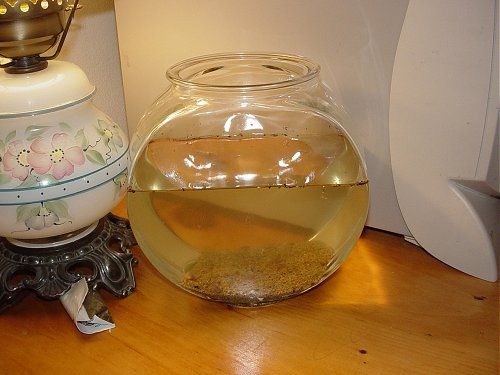
As long as you do 100% water changes every 3 or 4 days and keep them in a warm room or next to a lamp, you shouldn’t need any sort of filtration or heater. They also prefer sand to dig and eventually lay eggs in. The instructions keep reiterating that you should ONLY use natural spring water, but I’ve been doing just fine with dechlorinated tap water.
Growth/Lifespan:
When they hatch they are just tiny white specks that are about 1/16″.
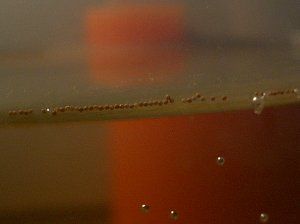
For about the first week, they’ll nearly double in size every day.
Triops Day #1
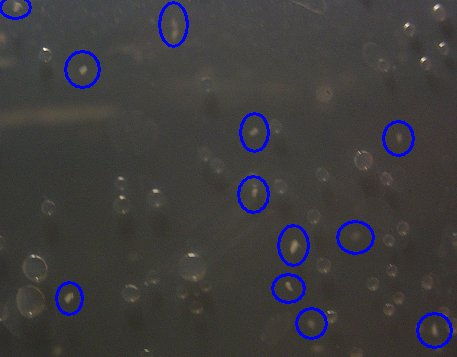
Triops Day #2
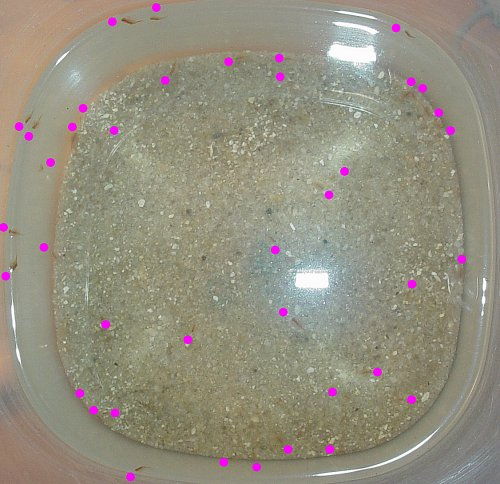
Triops Day#3
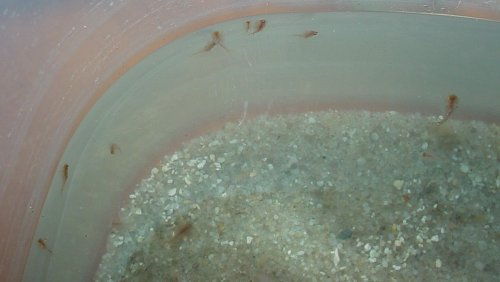
Triops Day #4

Triops Day #5
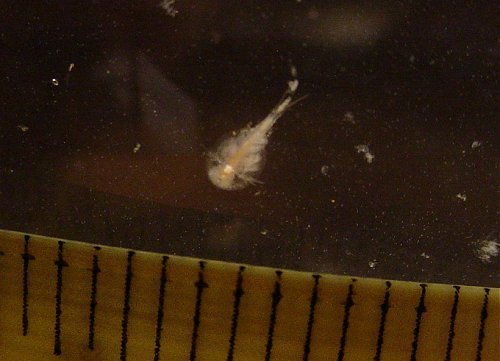
Triops Day #7

Triops Day #8

Triops Day #9
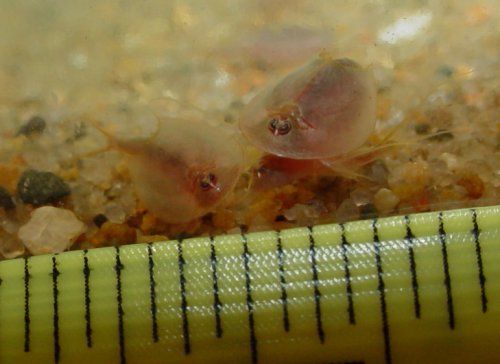
Triops Day #11
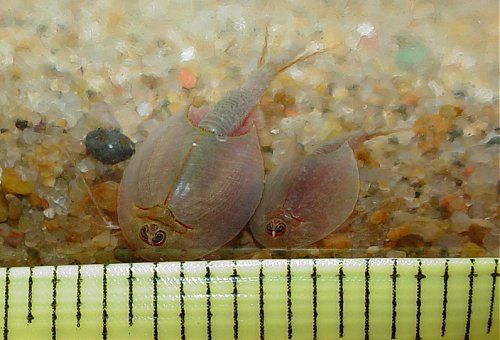
Triops Day #13
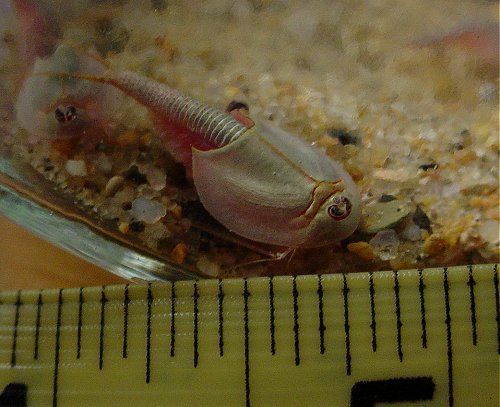
Triops Day#16
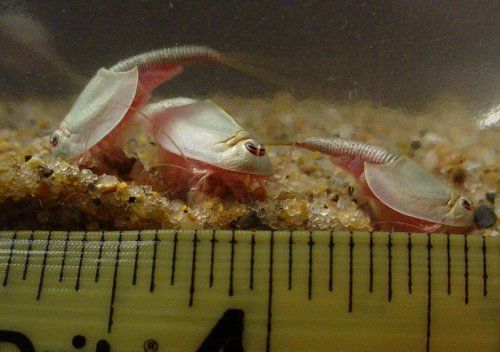
Triops Day #19
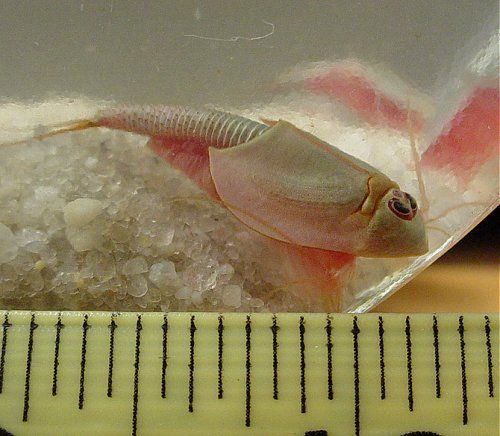
Triops Day #33

Triops Day #43
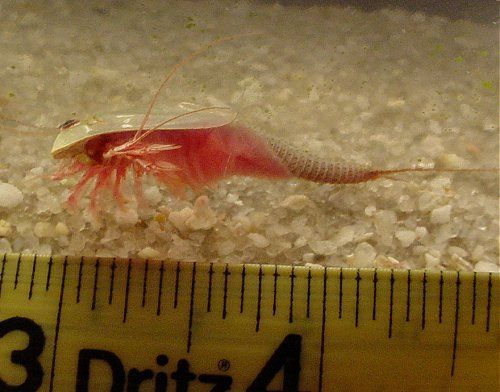
Triops Day #52
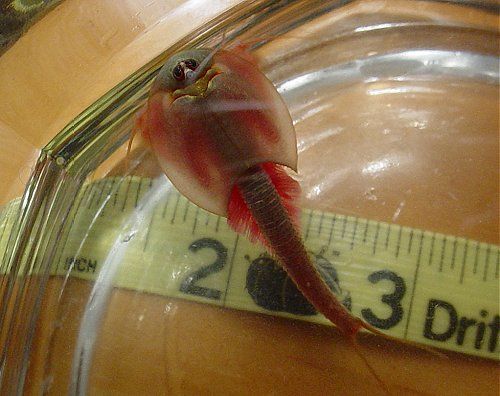
They only live for about 2 – 3 months and generally get 1″ – 2″ in length. As they grow, they’ll molt. Mine molt approx 2 or 3 times a week, depending upon whether they’re going through a growth spurt or not.
Breeding:
When they are about 3/4″ long or about 2 weeks old, the females will develop round, yellow egg sacks just behind the carapace (i.e. the bony covering or shell) on either side. That’s the only way I know of to tell the difference between males and females. The females will dig in the sand and lay their eggs. To get the eggs to hatch, you have to remove the sand and let it dry completely. Then it’s just a matter of putting the sand in a container with about a gallon of water and wait a couple days for them to hatch.
Egg sack:
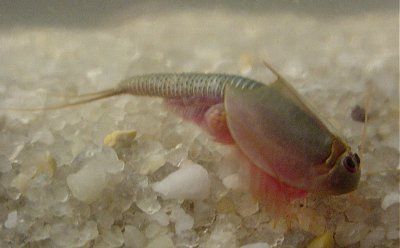
Food:
The kit comes with a package of brown & green pellets that you’re supposed to feed them. I’ve done a little research though and found out that they’ll eat just about anything including bloodworms, tubifex worms, vegitation, and flake food.
Temperment:
They’re really fun to watch because they swim pretty irratically doing corkscrews, figure 8’s, and floating on their back to eat. I did have some aggression problems keeping 5 adults in the one gallon bowl. One’s shell got all torn up and I separated him, but he died anyway. I also woke up one morning to find a carapace with a few legs and nothing else.
My own experience:
From the kit, I ended up with 7 triops (2 male, 5 females) that reached adulthood. I ended up feeding four of theses to the oscars and 2 were killed by the others. So, I currently have one male. He is 57 days old and about 1 3/4″. I’m going to let him live out his life just to see how big he gets and how long he lives.
A couple of weeks ago, I took out the sand and put it in a jar to dry. Then, I rehydrated it and the next morning I had tons of little baby triops swimming around. I probably should have kept back half of the sand for later, but I wasn’t sure if they would actually hatch. So, now I have at least 20 baby triops and I’ve decided to start my own little triop farm! I bought 3 one-gallon plastic storage bins. They are short and long instead of tall so hopefully that will help with aggression (more surface area and sand to keep them occupied). Plus, they fit perfectly on the shelf below my 10 gallon aquarium.
Awesome job on your Triops! We currently have two males who are almost 10weeks old! We just took them on a camping trip.
this is fun. i worried now when i need to separate them so they dont eat each other. day 9-10. using Vita chem
I love Triops and the fact that you got 20 babies is adorable I can’t wait till I get baby Triops again.
three of my triops died now I only have one and I don’t know why because it is fine 🙁
My Triops died after 2 weeks and I’m sad